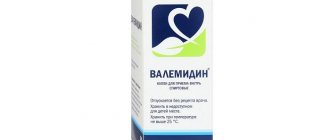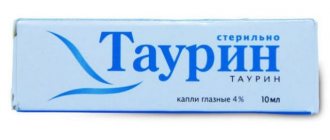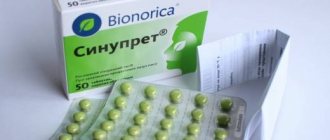The drug Polydex with phenylephrine is often recommended by ENT doctors (otolaryngologists), as they are systematically faced with the fact that after suffering from colds, severe complications develop, such as inflammation of the middle ear, purulent conjunctivitis, tonsillitis, sinusitis, sinusitis.
The development of these diseases is caused by bacterial microflora, which means treatment requires the use of antibiotics, one of which is Polydex with phenylephrine.
As a rule, therapy begins with local treatment. Usually the doctor prescribes medications - antibiotics in the form of drops or sprays. Now patients will no longer have the question: Is Polydexa with phenylephrine an antibiotic or not? Definitely, this is a medicine that contains antibiotics.
Properties of the drug Polydex with phenylephrine
This is a combination drug with an anti-inflammatory effect, which is used in otolaryngology as a local treatment.
Dexamethasone has an anti-inflammatory effect on the nasal mucosa, while neomycin and polymyxin B, antibiotic components, have an antibacterial effect. The combination of these antibiotics makes it possible to use the drug for the treatment of infectious and inflammatory diseases that develop in the nasal cavity, in the paranasal sinuses and are caused by various microorganisms.
Analogs
There are no drugs that have the same composition as Polydexa, there are only medications with a similar effect:
- Isofra is a French drug produced in the form of a nasal spray. The therapeutic effect of the drug is explained by the aminoglycoside it contains. The drug can be used in children according to the regimen prescribed by the doctor. The drug is prescribed for respiratory tract infections caused by antibiotic-sensitive pathogens.
- Otofa is an ear drop containing rifamycin as a therapeutic component. The drug is recommended for bacterial otitis, including in children.
- Vibrocil is a combination medication containing phenylephrine and dimethindene maleate as active ingredients. The drug has an antiallergic and vasoconstrictor effect. The drug is used for rhinitis, sinusitis, otitis media. Nasal drops can be prescribed to children from one year old, spray and nasal gel - from 12 years old.
- Tsipromed. Ear drops contain ciprofloxacin as an active substance. They can be prescribed for otitis in children over 15 years of age. Tsipromed is prohibited for the treatment of pregnant and lactating women.
Compound
The drug has two options for use: nasal spray drops and ear drops. What's the difference between them? The main and only difference is that the ear drops do not contain phenylephrine. Let's consider what effects the components of the drug have.
Phenylephrine
It is a vasoconstrictor used to treat rhinitis. When phenylephrine is applied topically, swelling quickly decreases, nasal congestion disappears, as does heavy discharge. This happens due to the fact that the lumen of the capillaries narrows. Now there are no questions like: is the drug Polydex with phenylephrine a vasoconstrictor or not?
Neomycin
This component is an antibiotic that has a strong bactericidal effect. It fights infections caused by the following pathogens: Staphylococcus aureus, P. Aeruginosa, K. pneumoniae, E. coli, H. Influenzae, H. influenzae, K. Pneumoniae and Pseudomonas aeruginosa.
However, streptococci, pneumococci and anaerobic bacteria are not affected by this drug. But Staphylococcus aureus, which is the main source of complications in ENT practice, ceases its negative effect on the body when exposed to neomycin.
Polymyxin B
The main purpose is to provide an antibacterial effect against Escherichia coli, Pseudomonas aeruginosa, Haemophilus influenzae, Klebsiella pneumoniae.
The combination of neomycin and polymyxin B makes it possible to expand the scope of application and fight microorganisms that provoke the development of purulent complications that occur in the paranasal sinuses, in the area of the middle and outer ear. Polydex ear drops and nasal drops contain the same antibiotic content.
Dexamethasone
This component is a hormonal drug that, when applied topically, has a strong anti-inflammatory, decongestant and antiallergic effect. In complex combination with the above-mentioned antibiotics, dexamethasone gives an even stronger therapeutic result. This is expressed in the fact that inflammatory, purulent complications stop very quickly, and the patient recovers.
Excipients
The instructions for use state that the composition of the drug Polydex with phenylephrine also includes auxiliary components, namely:
- purified water;
- polysorbate;
- lithium hydroxide;
- macrogol 400;
- lemon acid;
- lithium chloride;
- methyl parahydroxybenzoate.
pharmachologic effect
Manufacturer: Farmaster, France
Release form: ear drops, nasal spray (with phenylephrine)
Active ingredients: polymyxin B, neomycin, dexamethasone
Polydex is available in two forms - ear drops and phenylephrine nasal spray. Common components are two antibiotics and a local glucocorticosteroid. Medicines have the following therapeutic effects:
- antibacterial;
- anti-inflammatory;
- vasoconstrictor (typical only for nasal spray).
With uncontrolled or frequent use, there is a high risk of developing insensitivity of microorganisms to the antibiotics included in Polydex. In the future, this threatens the ineffectiveness of the drug for diseases of the ENT organs and the development of superinfection.
Polydexa - antibiotic or not
Polydexa with phenylephrine is a nasal spray. It additionally contains a vasoconstrictor component, which eliminates nasal congestion, swelling and redness (hyperemia) of the mucous membrane.
Indications for use
Direct indications for the use of the drug Polydex with phenylephrine are infectious and inflammatory processes that cover the paranasal sinuses and nasopharynx, the nasal cavity:
- chronic and acute rhinitis;
- runny nose in children, which is accompanied by the formation of purulent mucus;
- purulent rhinitis, which developed in children as a result of prolonged intubation using the nasotracheal method;
- rhinopharyngitis, occurring in acute and chronic forms;
- sinusitis, sinusitis, sinusitis;
- acute form of runny nose, resulting from colds and viral infections;
- chronic adenoiditis;
- treatment and preventive measures that are prescribed after surgery in the area of the nasal cavity and paranasal sinuses.
Polydexa with phenylephrine is a drug that can be prescribed by a doctor as an independent drug or as part of complex therapy with the use of other medications that have general and local effects.
"Rinofluimucil" or "Polydex"
The first medication, unlike the second, contains acetylcysteine and tuaminoheptane, which have vasoconstrictor, as well as anti-inflammatory and antioxidant effects.
But “Rinofluimucil”, unlike “Polydex”, does not have an antibiotic in its structure. In terms of restrictions on use, “Rinofluimucil” differs in that it is not recommended for use in thyrotoxicosis. Naturally, both medications are prohibited in case of increased sensitivity to their active or additional components.
Neither drug is recommended for use during pregnancy
Both drugs are prescribed with extreme caution under the supervision of a medical specialist in a situation where the likely benefits outweigh the possible risks.
Contraindications
When is the use of the drug prohibited? Let's consider under what conditions and diseases it is not recommended to treat ENT organs with the drug Polydex with phenylephrine:
- if there is a suspicion of angle-closure glaucoma;
- kidney disease, which is accompanied by albuminuria;
- renal failure;
- period of pregnancy and breastfeeding;
- children who are under 2.5 years old (parents often ask at what age children can be treated);
- individual immunity to at least one component of the drug;
- simultaneous use of MAO inhibitors.
The drug should be used with caution in patients diagnosed with hypertension (high blood pressure), coronary heart disease, and hyperthyroidism.
What other negative effects can the drug cause?
According to reviews, Polydex drops with phenylephrine for the nose in rare situations can provoke a feeling of dryness in the nostrils, as well as certain side effects:
- Nettle rash (a disease the main symptom of which is the appearance of blisters on the skin).
- Tremor (fast and rhythmic movements of the legs, arms or torso, which are provoked by muscle spasms and are associated with a temporary delay in afferent signals).
- Migraine (a neurological disease characterized by frequent episodic or constant severe pain).
- Tachycardia (increased heart rate more than ninety beats per minute).
- Paleness of the skin.
- Increased blood pressure.
- Insomnia (sleep disorder, which is characterized by shallow and interrupted sleep, delayed onset or premature awakening).
special instructions
Let's take a look at some recommendations regarding the use of Polydex with phenylephrine.
- The medication is prohibited for oral administration.
- The medicine is not used as a means for rinsing the paranasal sinuses.
- The drug contains components that can show a positive result during doping control for athletes.
- Do not exceed the dosage, nor continue the course of treatment after 10 days from the start of use. Otherwise, withdrawal syndrome and iatrogenic rhinitis may develop.
- Since the drug contains an antiallergic substance, the course of the allergy may change if the patient suffers from this disease.
- It must be remembered that after uncorking the bottle, harmful microorganisms may enter it.
- The drug does not affect a person’s ability to drive vehicles and machinery.
How to take and dosage for children
If we talk about the dosage and frequency of administration for children, it is worth recalling once again that the drug is not used until 2.5 years of age. Otherwise, the dosages will be as follows:
- Ear drops – 1-2 drops in each ear 2 times a day.
- Nasal spray - up to 15 years of age it is allowed to take one injection into each nostril up to 4-5 times a day. After 15 years, it is permissible to make from 3 to 5 injections into each nasal passage 3-5 times a day.
However, these are standard indicators; in some cases, the treatment regimen may be changed. An otolaryngologist, pediatrician or family doctor has the right to do this.
When using the medicine, the bottle is held in an upright position, the child's head is slightly tilted forward. When a substance penetrates into the nose, it is sprayed throughout the entire mucous membrane, rather than flowing into the nasal passage in a stream.
We recommend: Augmentin suspension for children
The ear drops are slightly warmed before use. This can be done by holding the bottle in your hands. After instilling drops into the ear, you need to slightly pull the earlobe so that the medicine flows freely into the passage. The child should keep his head tilted for some time. After this, a cotton pad is inserted into the ear hole.
Side effects
Any reactions during the use of Polydex ear drops are quite rare. Local manifestations of allergies are possible, which include:
- Severe itching
- Rash.
Due to the content of a large number of components, the therapeutic effect of use is realized directly through the nasal mucosa, which is why there is a high probability of developing all kinds of side effects. Signs of an allergy include dryness of the nasal mucosa. Systemic reactions to Polydexa nasal spray can only occur with long-term therapy or when recommended therapeutic doses are exceeded. In addition, the following are not excluded:
- Severe headaches
- Impaired sleep quality
- Sharp jump in blood pressure
- Tremor
- Signs of tachycardia
- Paleness or redness of the skin, as a result of impaired microcirculation.









